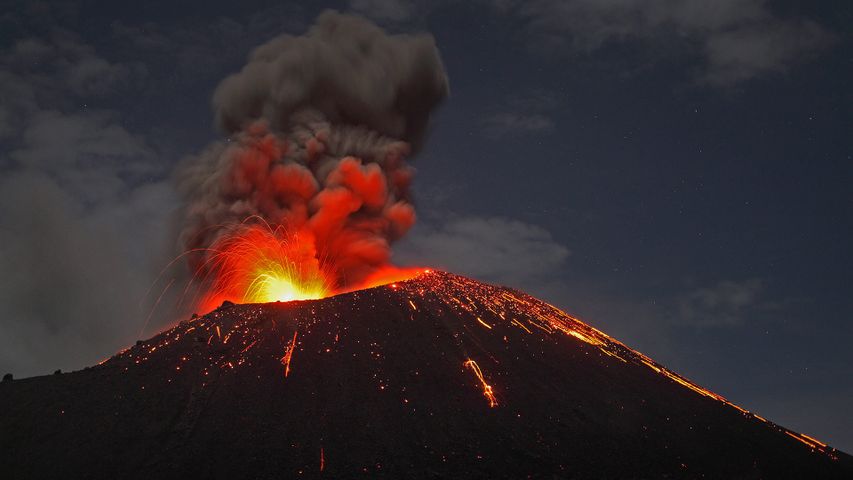Anak Krakatoa volcano erupting of the coast of Sumatra, Indonesia
© Martin Rietze/Alam
Remembering Krakatoa. Remembering Krakatoa
Over two days in late August 1883, Krakatoa—an uninhabited island near Indonesia—experienced one of the most destructive volcanic explosions of modern times. Ten times more powerful than the eruption of Mount St. Helens, the explosion obliterated all but a third of the island. The blast could be heard nearly 5,000 kilometres away—it’s still the loudest sound ever recorded—and triggered massive tsunamis. More than 36,000 people lost their lives, and the explosions impacted the entire world: Global temperatures dropped and skies darkened for years, causing huge crop failures. Sunsets turned a vivid red and the moon was often blue or green for years after the event due to the volcanic debris circling in the atmosphere.The volcano we’re featuring today emerged from the ruins of the giant that exploded on this day in August 1883. Anak Krakatoa, or ‘child of Krakatoa,’ began to rise in 1927. Though it has yet to be as destructive as its predecessor, the juvenile volcano is highly active, and a collapse of the lava dome in December 2018 caused a massive tsunami, a reminder of just how dangerous this part of the world remains.
Related Images
Bing Today Images



 Skylight into an active lava tube, Hawaii Volcanoes National Park, Hawaii
Skylight into an active lava tube, Hawaii Volcanoes National Park, Hawaii
 Winter at the Isis Temple in Grand Canyon National Park, Arizona
Winter at the Isis Temple in Grand Canyon National Park, Arizona
 At the top of Mount Fuji in Japan. Happy New Year!
At the top of Mount Fuji in Japan. Happy New Year!
 Mount Kilimanjaro from Chyulu Hills National Park in Kenya for Mountain Day
Mount Kilimanjaro from Chyulu Hills National Park in Kenya for Mountain Day


